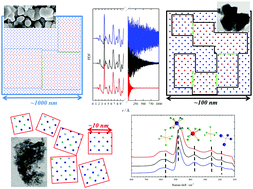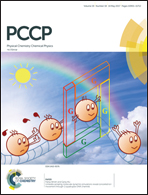From nano to microcrystals: effects of different synthetic pathways on the defect architecture in heavily Gd-doped ceria†
Abstract
The evolution of the defect structure and microstructure of heavily Gd-doped ceria (Ce1−μREμO2−y, 0.313 ≤ μ ≤ 0.438) for different synthetic pathways is investigated here to explore the way defects interact with each other in a composition range known to effectively hamper the application of the material as an electrolyte. Synchrotron radiation powder diffraction is exploited by combining conventional Rietveld analysis with the Pair Distribution Function to get a multiscale picture of defect structures, and it is combined with Raman spectroscopy to assess local scale interactions. Samples were prepared via both the sol–gel route and coprecipitation of oxalates by sintering the powders at different temperatures to obtain samples with different defect distributions and crystallite sizes, investigated using electron microscopy and Whole Powder Pattern Modelling from diffraction data. As a general scheme, increasing the doping amount transforms the fluorite structure of ceria into C-type Gd2O3. For samples annealed at and above 900 °C, containing crystals at least ∼100 nm in size, this transformation occurs through a mechanism involving first the formation of distorted Gd-rich droplets on the local scale, then the growth of extended C-type nanodomains. Nanoparticles, resulting from thermal treatments at lower temperature, are less distorted on the local scale and transform abruptly upon doping, without forming larger dopant-rich aggregations, from fluorite to the C-type. The annealing temperature not only acts on the sintering of the crystallites, it is also found to promote a radical change in the microstructure as a consequence of the preferential aggregation of oxygen vacancies.



 Please wait while we load your content...
Please wait while we load your content...